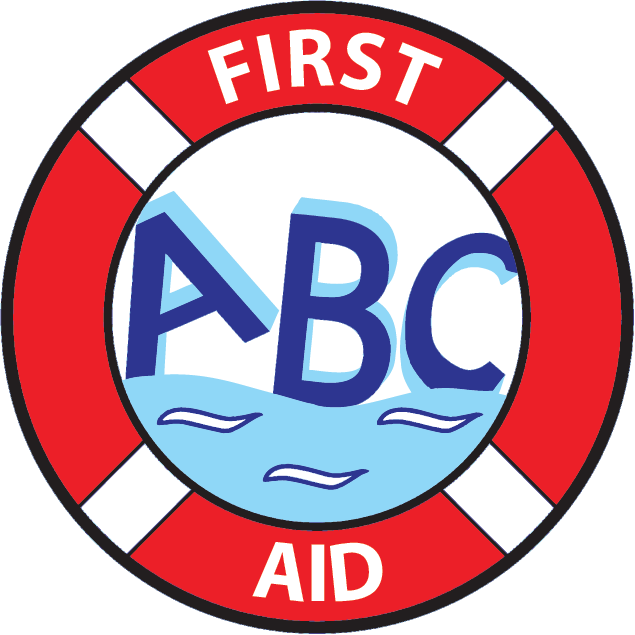Title Page
-
Site conducted
-
Conducted on
-
Prepared by
-
Location
Documentation
-
Service has the following required policies and procedures in place for Safety and Emergency Management
-
• Water safety, including safety during any water-based activities
-
• The administration of first aid
-
- Medical conditions policy
-
. Manual Handling policy
-
• Incident, injury, trauma and illness procedures
-
• Work Health and Safety Policy
-
• Psychological policy
-
• Notifying the regulatory authority for serious incidents, change of circumstances and complaints
-
• Emergency and evacuation
-
• Excursions/incursions policy
-
• Sun protection - Does the sun policy state how educators manage the temperature of outdoor play equipment (what is the temperature that is to hot (recommended is 50 degrees), do they use a thermometer, when is the equipment checked (throughout the day?)
-
• Administration of medication - this should include checking the written authorisation from the parent, checking that the medication does not exceed its use by date and it is supplied in its original packaging, checking the medication has the child's name on it, storing medication appropriately, and completing records to indicate when medication is administered. Also having another person check the dosage and witness the administration of the medicine to the child.
-
• Dealing with medical conditions (asthma attack or anaphylactic reaction)
-
• Procedures for students, volunteers, and visitors
-
• Bus Policy /procedure (including risk assessments and written authorisation)
-
• Contractor procedures
-
Transportation policy/procedures (including risk assessments and written authorisation).
-
Children's Belongings Policy
-
Physical environment policy
-
Furniture and equipment safety policy
-
• Child-safe environment policy - if the service provides coffee to parents is this part of the policy?
-
Managing an aggressive parent or visitor policy
-
• Poisonous plants policy
-
• Hazardous substances policy
-
Managing spills of hazardous chemicals procedure
-
Bullying, discrimination & harassment procedure
-
Service has the following required policies and procedures in place for Hygiene and Infectious Disease control
-
• Reporting of infectious diseases
-
• Safe practices for handling, preparing and storing food
-
• Washing children’s bedding, dress up clothes, cushion covers and other washable material
-
• Nappy changing and toileting procedures
-
• Hand washing procedures
-
• Pregnancy and infectious disease policy for staff
-
- Immunisation policy
-
Copies of the current policies and procedures accessible to all staff and parents at the service ? <br><br>
-
How does the service manage staff immunisation? The best protection for workers against diseases that are preventable by vaccination is an occupational immunisation program that:<br> - includes an immunisation policy which states: the workplace's vaccination requirements<br>how vaccine refusal, medical contraindication to vaccination (medical condition which makes vaccination inadvisable) and vaccine failure will be managed<br>how the risks to contract and labour hire workers, students, volunteers and others will be managed<br>requires all at risk workers to complete an immunisation record for the relevant vaccine-preventable diseases<br>identifies non-immune and incompletely immunised workers from the immunisation record and encourages them to be vaccinated in accordance with the immunisation policy<br>provides workers with information about the relevant vaccine-preventable disease(s) and the availability of vaccination<br>updates each worker's immunisation record following vaccination. Recommended vaccinations for non-immune staff who work with young children include:<br> - hepatitis A<br> - measles-mumps-rubella (MMR) (persons born during or since 1966 who have only received one dose of the MMR vaccine should have a second dose)<br> - chickenpox (if not previously infected)<br> - pertussis (whooping cough) (an adult booster dose)<br> - influenza (annual vaccination
-
Are risk assessments completed for educators who are not immunised? Where workers refuse vaccination, are unable to be vaccinated for medical reasons, or do not respond to vaccination, the PCBU should undertake a risk assessment to determine the most appropriate way to protect these workers against infection, giving consideration to the way in which the infectious disease is spread.<br><br>Control measures may include:<br> - appropriate work placement and adjustment (e.g. consider placing workers who have received the adult pertussis booster to care for the youngest infants).<br> - review of work practices to ensure safe systems of work for infection prevention and control<br> - additional information, instruction, training and supervision<br> - personal protective equipment.<br><br>
-
Service has a register of hazardous chemicals and substances (cleaning chemicals, garden sprays, glues, etc). Where is this register kept at the service and do all staff have access to it? <br><br>
-
Service has a SDS folder? Where is it kept? Is the folder easily accessible to all staff?
-
Are all SDS sheets available for chemicals being used at the service and are in date (SDS need to be updated every 5 years) <br><br>
-
Service completes a Purchasing risk assessment sheet before ordering cleaning products, resources or equipment for the service
-
There are checklists completed to monitor the maintenance of buildings, safety, equipment and the general environment - what are these? <br><br>
Does the service induction training include the following:
-
• Defined job role (discussed in detail to ensure employee understands their role)
-
• Consultative and communication process, including HSR and HSC if applicable
-
• Hazards of work – hazards reports including where to find forms and who to report this
-
• Incident and accident reporting– the procedures on how to report this, and the procedures if the injury is serious enough that they need to have time away from work (Workers compensation process and RTW)
-
• All service policies and procedures to be read
-
• Fire and Emergency evacuation procedure and plan in place
-
• First aid management – where are the first aid kits kept and is there a first aid officer?
-
• How to safely use the cleaning products, correct cleaning methods and how to read SDS and where they are kept
-
• Safe ladder use
-
• Lifting and manual handling procedures
-
If English is not the first language spoken for an employee, how does the director ensure that the employee has understood all induction training including policies and procedures?
-
Are all new employees working at the service have induction training (eg. casuals or a person who may only do 1 shift at the centre as a fill in)?
-
How does the Service document training for staff ?
-
Does the service complete training for psychosocial hazards as well as manual handling,etc?
-
Risk management process in place to identify hazards and control them – does it follow the recommended risk management process and include hierachy of control?<br> <br>
-
Give examples of risk assessments that have been completed at the service.
-
Violence, aggression and challenging behaviour risk assessments has been completed in consultation with staff for parents (eg. court order issues, unauthorised access to children).
-
Are there systems in place to respond to prevent and manage violence and aggression from parents.
-
Is there a risk assessment worksheet used for hazardous manual tasks?
-
Is there a hazard/risk register is available to manage hazards? <br> <br> <br>
-
A Return to Work program in place for Workers compensation claims including policies and procedures? <br> <br>
-
Service has the “What to do if you are injured” poster displayed?
-
Systems are in place for reporting notifiable injuries to WorkSafe?
-
Does the director share responsibility for WHS in the service? If so, how? <br> <br>
-
Service has a register of injury for children?
-
Service has a register of injury for staff? If not how does the service manage staff injuries to ensure controls have been put in place to reduce the risks?
-
Service has consultation processes in place for Health and safety with staff (such as HSR, HSC or other non-formal processes such as meetings, one on one talks)
-
A risk assessment is completed before every excursion?
-
Is there a procedure for the morning to do a head count for the service? This is important for Emergency drills and the general safety of the children.
-
Is there a procedure for the late shift to do a head count to ensure all children have safely left the service?
-
Does the service have a communication plan in place to inform all staff members of any children with a health care need, allergy or relevant medical condition - if so what is it and who manages it?
-
Does the service have a designated area (notice board or a wall in the staffroom) for WHS for staff?
-
Any extra comments for this section?
Hygiene and Infectious disease control
-
Does the service provide sheets for the children's cots and beds? <br> <br>
-
Is the linen being stored hygienically in bags with child's name on the bag?
-
How does the service ensure that sheets are not used on more than one child's bedding?
-
Service has a waste clean up kit from removing and cleaning away blood and body fluid spills? (kit should include items such as single use gloves, paper towel, disposable cloths, detergent and bleach, non-toxic absorbent powder, biohazard container/leak proof bag and eye protection).
-
Service has mouthed toys buckets in rooms to put toys that need cleaning?
-
Is there a toy and equipment cleaning register in place to show when items have been cleaned?
-
Nappy -changing and toileting procedures are displayed in toilet and nappy-changing areas for staff to refer to? <br> <br>
-
Are Educators following the nappy changing procedures? If not what are they not doing?
-
All nappy changing mats are in good condition with no damage?
-
Correct hand-washing procedures displayed in relevant areas of the service for staff, such as bathrooms, nappy change areas and food preparation areas? <br> <br> <br>
-
Staff following correct hand washing procedures?
-
Educators supporting the Children to follow correct hand washing procedures and other hygiene practices such as coughing, dental hygiene?
-
Visual aids and hand-washing signs are displayed where children wash their hands? <br> <br>
-
Visual aids are displayed for correct hand sanitising procedures throughout the service?
-
Personal Protection Equipment (PPE) is available and worn when required? (eg. Changing nappies or using cleaning products). <br> <br>
-
Service uses a colour guide for cleaning cloths and mops to help with contamination?
-
How does the service communicate with families if there is an outbreak of an infectious disease?
-
Is the service cleaning high-touch areas throughout the service more regularly and is this part of a checklist?
-
Any other comments for this section?
Emergency Management
-
Service has a copy of the emergency and evacuation floor diagram and procedures and instructions displayed in a prominent position near each emergency exit at the service? <br> <br>
-
Are the emergency diagrams printed in correct size for what elements are shown on them?
-
Are the diagrams in each room for that room?
-
Do the evacuation diagrams display the correct information as per regulations and are current?
-
Does the service have emergency evacuation bags and are they clearly labelled?
-
Is there an emergency evacuation bag checklist in place?
-
Fire warden appointed and names displayed
-
Are there procedures for - building fire, bushfire, gas leaks , intruder. Bomb/substance threat, severe weather event, earthquake, influenza pandemic?
-
Does the service practice drills that may be service relevant..eg floods?
-
Service rehearses the emergency and evacuation procedures every 3 months and this is recorded? <br> <br>
-
Is the service completing a variety of drills - not just fire drills?
-
Have risk assessments been completed for each evacuation?
-
Is children's medication kept in a locked cupboard or area?
-
Is there relevant paperwork available for any child that has medication to take and is it current?
-
How does the service ensure that all child medication is taken during an evacuation?
-
How does the service ensure all children's medication is in date?
-
Does the service have an evacuation emergency cot and is it clearly labelled?
-
Service has hard copies of children’s emergency contacts that can be carried by educators in case of emergencies and/or evacuations and are they current?<br> <br> <br>
-
Are all staff trained in the use of emergency equipment such as fire extinguishers and fire blankets? How often is this training completed?
-
Has there been consultation with relevant authorities and experts to inform and monitor evacuation procedures?
-
Does the service have a Emergency Management and response plan in place?
-
Staff at the service have ready access to an operating telephone or other similar means of communication to enable immediate communication to and from parents and emergency services <br> <br>
-
Emergency telephone numbers are displayed near telephones <br> <br>
-
All staff have ready access to emergency equipment such as fire extinguishers and fire blankets ? <br> <br>
-
Fire equipment have been serviced as required and there is evidence to support this? <br> <br>
-
Appropriate amount of first aid kits are readily available and easily recognisable including portable kits for excursions and evaucations? <br> <br> <br>
-
The kits are suitably equipped and all items are within expiry date? <br> <br>
-
Is there a first aid checklist available to ensure kits are checked regularly and properly stocked at all times?
-
All exit doors are clearly labelled, unobstructed and easily opened from the outside
-
Any extra comments for this section?
Indoor Environment
-
All storerooms are organised in a way to reduce the risk of incidents? <br> <br>
-
Does service have door guards or protectors to help reduce injuries to children's fingers?
-
Step ladders or ladders are available for staff to use to access high shelving, etc? Are they in good condition? <br> <br>
-
Moving aids such as trolleys are available and in good working order ? <br> <br> <br>
-
Large or bulky children’s furniture have castors for easy movement around service when required?
-
All electrical items have test and tagging, and it is current ? <br> <br> <br>
-
If service is not getting all appliances test and tagged, is there a electrical test and tagging register in place to show what portable items have been tagged and when?
-
All unused electrical powerpoints have safety plugs ? <br> <br> <br>
-
Hazardous chemicals are stored in an area that is lockable and easily identified or stored out of reach of children? <br> <br> <br>
-
All chemicals are clearly labelled in containers and spray bottles throughout the service? <br> <br> <br>
-
There are adult chairs for educators to sit on in rooms to prevent staff from sitting on children's chairs?
-
Nappy change areas have steps available for children to use and they are in working condition?
-
Staff can move safely around the service - passages are kept free of obstructions?
-
When staff are mopping floors are they using wet floor signs?
-
Office area - free from clutter, economical chairs available, computer monitors at correct height, any storage areas maintained safely with sufficient space to enable easy and safe access, area is not poorly lit and there is natural light available, not overly noisy.
-
Programming room - free from clutter, economical chairs available, computer monitors at correct height, any storage areas maintained safely with sufficient space to enable easy and safe access, area is not poorly lit and there is natural light available, not overly noisy
-
Staffroom - clean and well maintained? No hazards?
-
Is the kitchen clean and well maintained?
-
Any storage areas in the kitchen well organised to minimise lifting and bending
-
Safe knife handling procedures are in place and include storage of knives, carrying knives, sharpening of knives, cutting on stable surfaces, carrying knives with blade downwards?
-
Aerosol cans containing substances such as cooking oil are kept clear of ignition sources and heat sources such as lit gas burners, ovens, on top of range hoods, naked flames and direct sunlight?
-
Does the kitchen have a first aid kit that has relevant items for injuries that would happen in that environment? eg burn aid?
-
Does the service serve hot beverages to parents or carers?
-
Has there been a risk assessment completed for this (in regards to making hot drinks for parents/visitors)?
-
Are there any other visible hazards?
-
Any extra comments for this section?
Outdoor Environment
-
Sandpits are visually clean? <br>
-
Service has a cover available for the sandpit and is it in good condition? <br>
-
There is a procedure in place for cleaning the sandpit each day? <br> <br>
-
Does the service sanitise the sandpits each week - if so what is the procedure and is this a written procedure?
-
Are the days UV rating showing in the service/outside area?
-
How does the service manage the temperature of outdoor equipment and flooring to ensure it is not to hot for children?
-
Are educators and children wearing hats when outside?
-
All outdoor equipment is in good repair - no broken equipment, rust, splinters that could cause an injury? <br> <br> <br>
-
Are there age appropriate toys and play equipment in outdoor areas?
-
No spider webs visible <br> <br> <br>
-
Are the gardens well maintained?
-
Are any sheds organised in a way to reduce the risk of incidents?
-
Are there supervision plans in place for the playground areas?
-
Any trip hazards in outdoor area <br> <br> <br>
-
Are there any other hazards visible?
-
Any extra comments for this sections?













